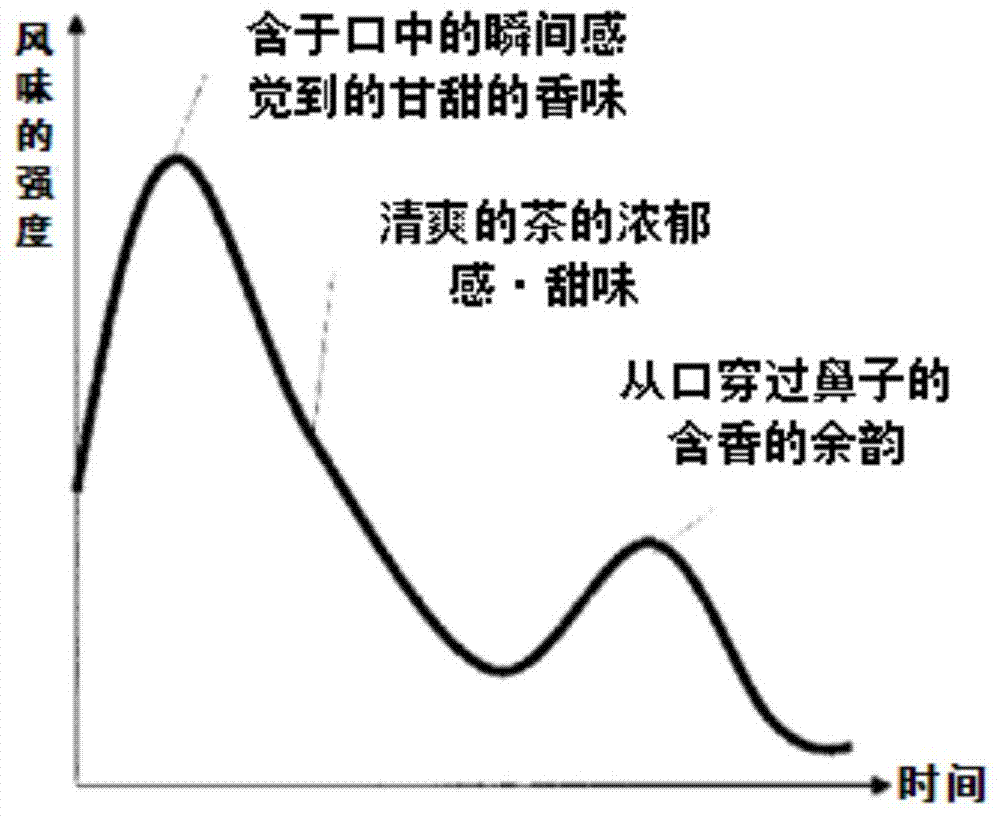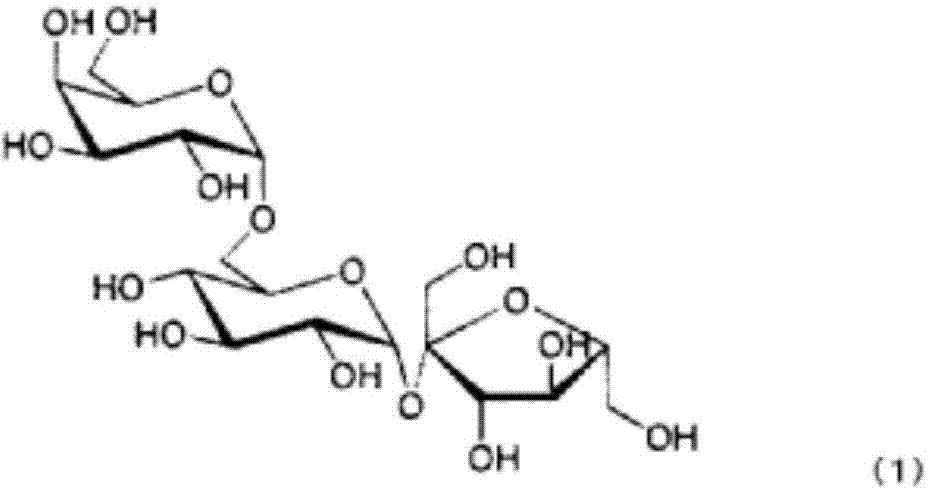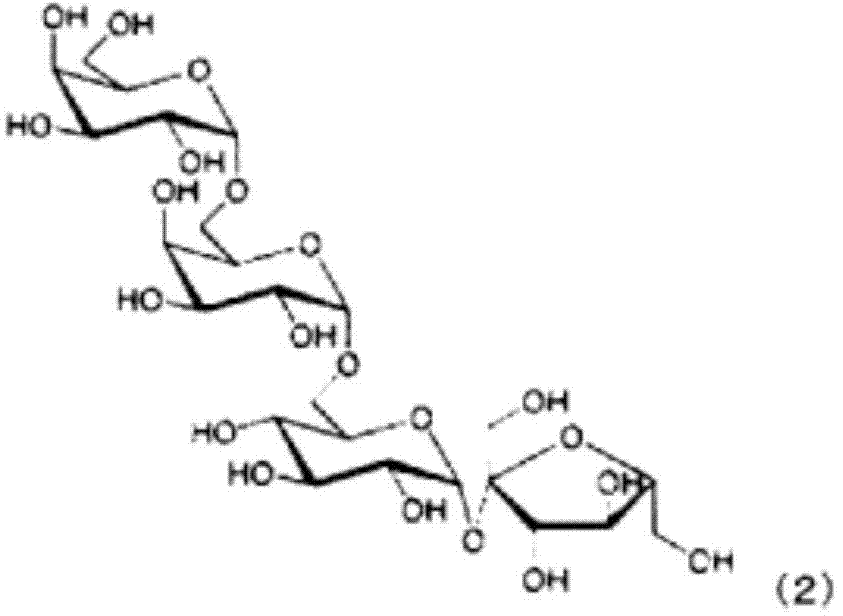green tea drink
A technology of green tea beverages and beverages, which is applied in the fields of tea, tea extraction, food science, etc., and can solve problems such as poor balance, bland taste, and lack of deliciousness
- Summary
- Abstract
- Description
- Claims
- Application Information
AI Technical Summary
Problems solved by technology
Method used
Image
Examples
Embodiment 1
[0152] A commercially available PET bottled sencha drink (catechin content: 800 ppm) was diluted with water to prepare a low-catechin tea drink (No. 1) with a catechin content of 300 ppm. Beverages (No. 2 to 6) to which L-valine (Ajinomoto Healthy Supply Co., Ltd.) was added according to the recipe in Table 1 were prepared. After heat-sterilizing the above-mentioned beverage according to the sterilization conditions stipulated in the Food Sanitation Act, it was filled into a PET bottle container every 500 mL, and the container was capped and sealed to manufacture a container-packed green tea beverage. The concentrations of catechins and amino acids (valine, methionine, and theanine) in the above drinks were quantified. Analysis conditions are as follows.
[0153] (Determination of catechins)
[0154] The tea beverage used as a sample was filtered with a filter (0.45 μm), and subjected to HPLC analysis. The analysis conditions of HPLC are as follows.
[0155] ·HPLC device: ...
Embodiment 2
[0190] The low-catechin tea drink of No.4 of Example 1 was further diluted to 2 to 7 times with water, and the same valine as in Example 1 was added to make the prescription of Table 3 to prepare the drink, and its drinkability was tested. evaluate. The evaluation was conducted by 5 professional judges, and the drinkability was indicated by the most evaluations according to ◎: very good, ○: good, △: fair, ×: poor.
[0191] The results are shown in Table 2. In the tea beverage (No. 7) having a catechin content of 50 ppm or less, even if a predetermined amount of valine was added, the enhancement effect of richness and aroma could not be obtained, and the taste was bland. All the judges evaluated that the drinkability of low-catechin tea beverages (No. 12 to 16) having a catechin content of 50 ppm or more was improved by adding valine.
[0192] Table 2
[0193]
Embodiment 3
[0195] Methionine (Ajinomoto Healthy Supply Co., Ltd.) was added to the low-catechin tea drink No. 4 of Example 1 to make the formulations (No. 13-14) in Table 3, and the drinkability was evaluated. Evaluation by 5 professional judges, ○: better than No. 4 drink, △: equivalent to No. 4 drink, ×: worse than No. 4 drink, and expressed with the most evaluations.
[0196] The results are shown in Table 3. It was found that the effect of improving the aroma and flavor of valine in low-catechin tea beverages tends to be suppressed when methionine is added. Regarding the drinkability, when compared with No.4 drink, No.13 drink was not much different from 3 out of 5 judges, while No.14 and No. For No. 15 drink, all the judges answered that the drinkability was significantly worse than that of No. 4, and the degree of richness and aroma could be barely felt. Accordingly, it is suggested that in beverages containing valine, it is better to adjust the concentration of methionine to 5 p...
PUM
 Login to View More
Login to View More Abstract
Description
Claims
Application Information
 Login to View More
Login to View More - R&D
- Intellectual Property
- Life Sciences
- Materials
- Tech Scout
- Unparalleled Data Quality
- Higher Quality Content
- 60% Fewer Hallucinations
Browse by: Latest US Patents, China's latest patents, Technical Efficacy Thesaurus, Application Domain, Technology Topic, Popular Technical Reports.
© 2025 PatSnap. All rights reserved.Legal|Privacy policy|Modern Slavery Act Transparency Statement|Sitemap|About US| Contact US: help@patsnap.com



